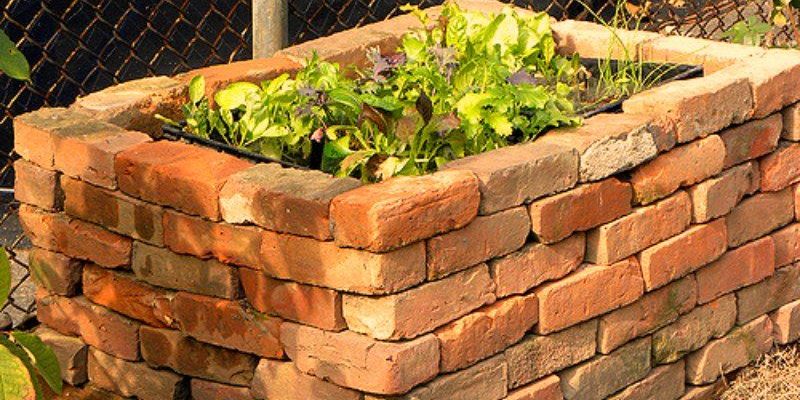How to Build Raised Vegetable Garden Beds
1.1 Benefits of Raised Garden Beds
2 Materials
2.1 Frame Type
2.1.1 Bricks
2.1.2 Cinder Blocks
2.1.3 Steel
2.1.4 Mortar Stone
2.1.5 Wood
3 Best Wood For Raised Garden Beds
3.1 Cedar
3.2 Douglas Fir
4 Best Soil for Raised Garden Beds
5 What Plants To Grow
5.1 Onions
5.2 Potatoes
5.3 Tomatoes
In this article we’ll talk about all the different ways to garden using raised beds, but essentially a raised garden bed is soil that is above the ground and enclosed with wood or concrete. They can be made in just about any size but a common choice would be 4 foot by 4 foot fo 4 foot by 8 foot.
Benefits of Raised Garden Beds
- Soil quality: If the soil in your yard is full of rocks or isn’t rich in nutrients you can create the right environment for your plants to grow by using raised garden beds.
- Extended planting season: In raised beds, the soil warms up faster which means that you can start growing your vegetables sooner
- Pest Control: By having your plants off of the ground and at a height, it will be easier to keep pests away. If you’re still having problems, add some chicken wire.
- Better drainage: If you add rocks to the bottom of the beds, it will allow for better drainage.
- Less soil erosion: By framing your beds with wood or bricks, you won’t loose soil with rainfall like you would in an ordinary garden.
Materials for Your Raised Garden Beds Frame
Before you can get started building your beds, you’ll need to decide on the materials you’re going to use. These beds can be made fairly inexpensively but it depends on the type of material you use for the frame.
Frame Type
Raised beds can be made with wood, steel, cinder blocks, bricks or mortared stone.
Mortar stone and steel would be the more expensive choices but they can add a real wow factor to your garden.
Brick Raised Bed Frame

Cinder Blocks Raised Bed Frame
Steel Raised Bed Frame

Mortar Stone Raised Bed Frame

Wood Raised Bed Frame

Best Wood For Raised Garden Beds
If you think you’re going to go with wood, then you might be wondering what type of wood works best with raised beds. Firstly, make sure you buy untreated wood.
Red Cedar
Red cedar can last more than 10 years and is rot resistant making it a really good option for your raised bed. It can be more expensive than other types of wood so if you’re on a budget you might want to go with Douglas Fir.
Douglas Fir
This is a cheaper option but it won’t last as long as cedar would.
Best Soil For Raised Garden Beds
The type of soil you use will depend on what you’re planting and also where you live. If you live in a warm climate, you’ll need to think about retaining moisture as best as you can.
That’s the great thing about raised gardens. You can really tailor the soil to your needs.
This is a quick and easy way to get great soil:
- 1/2 Topsoil
- 1/2 Screened Compost
- Mix well
As mentioned, you should check if what you’re planting requires certain soil conditions such as a specific pH level.
When filling your beds with soil, make sure that you’re raised boxes have at least 6 inches of soil in them.
Where to Buy Raised Beds
For the widest selection of raised beds, visit our partners at RaisedBeds.com.
What Plants To Grow
Now that you’ve made some decisions about the type of beds you want to have, you’ll need to start thinking about what you want to grow.
Here are 3 suggestions of what you can start growing in your raised vegetable beds:
Onions

Onions need a longer growing season than other vegetables so raised beds are perfect for them because the warmer soil allows you to get started growing earlier.
Potatoes

One of the most common problems that people have when growing potatoes is their tendency to rot. In raised beds, that’s much less likely to happen because the soil is loose. Potatoes are also easier to harvest from raised beds.
Tomatoes

Tomatoes need nutrient rich soil to grow well. In raised beds where you can customize the soil and continue to monitor it, it’s easier to grow tomatoes.


